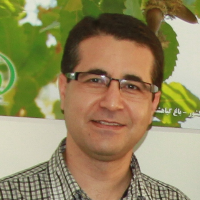Modification of structural characteristics of coppice stands of Brant`s oak (Quercus brantii Lindl.) using tending operations in the forests of Lorestan Province
In most parts of the Zagros, the structure of coppice oak stands is very fragile and unstable due to the lack of diversity in the horizontal and vertical profile. The aim of this study was to evaluate the effect of tending operations on the structural characteristics of Brant`s oak in Chegeni forests of Khorramabad, Lorestan province after 3 years. The study was conducted in a randomized complete block design with three replications with four treatments of light, medium and heavy thinning, which were thinned by 10, 20 and 30% of the basal area of the sprout-clumps, respectively, and the fourth treatment as a control. Measurements of quantitative variables were done. To investigate the effect of tending operations on dominance and dimension differentiation indices in the studied stands, the dominant and three neighboring sprouts in each sprout-clump were selected separately in different treatments and the quantitative characteristics of height and diameter of dominant and neighboring sprouts were measured. The results showed that due to tending operations, dominance and dimensional differences (collar height and diameter) indices of sprouts in heavy treatment were significantly higher than other treatments. Based on this, it can be concluded that heavy thinning treatment has been able to help improve the structure of the studied stands. Studying the effectiveness of other structural variables can help to identify the optimal thinning treatment. Also, this study emphasizes the importance of structural characteristics as a suitable tool for the management of oak coppice stands in order to help their sustainability.
-
Detection of ironwood (Parrotia persica) trees tolerance to air pollution using anatomical, physiological and biochemical leaf traits
Zahra Boor, *, Mohsen Mohammadi Galangash, Seyed Mohammad Moein Sadeghi
Journal of Forest and Wood Products, -
Investigating the changes of deep soil parameters adjacent to control stands and dieback trees in the forests of Kurdistan province (Case study: Marivan county)
Maziar Heidari *, Mohammad Matinizadeh, , Elham Nouri, Seyed Mosa Sadeghi
Iranian Journal of Forest and Range Protection Research, -
Investigating the occurrence of drought in the forest ecosystem of Zagros due to its coincidence with the decline of oak forests
Fatemeh Dargahian *, , Sakineh Lotfinasabasl
Iranian Journal of Forest and Range Protection Research, -
Investigating the effects of growth regulators benzyladenine, thidiazuron and gibberellic acid on the regeneration of chestnut (Castanea sativa Mill.)
Leila Hamidoost *, , Asadi Asadi Abkenar, Sahar Bohloli Zanjani
Journal of Forest and Wood Products,




